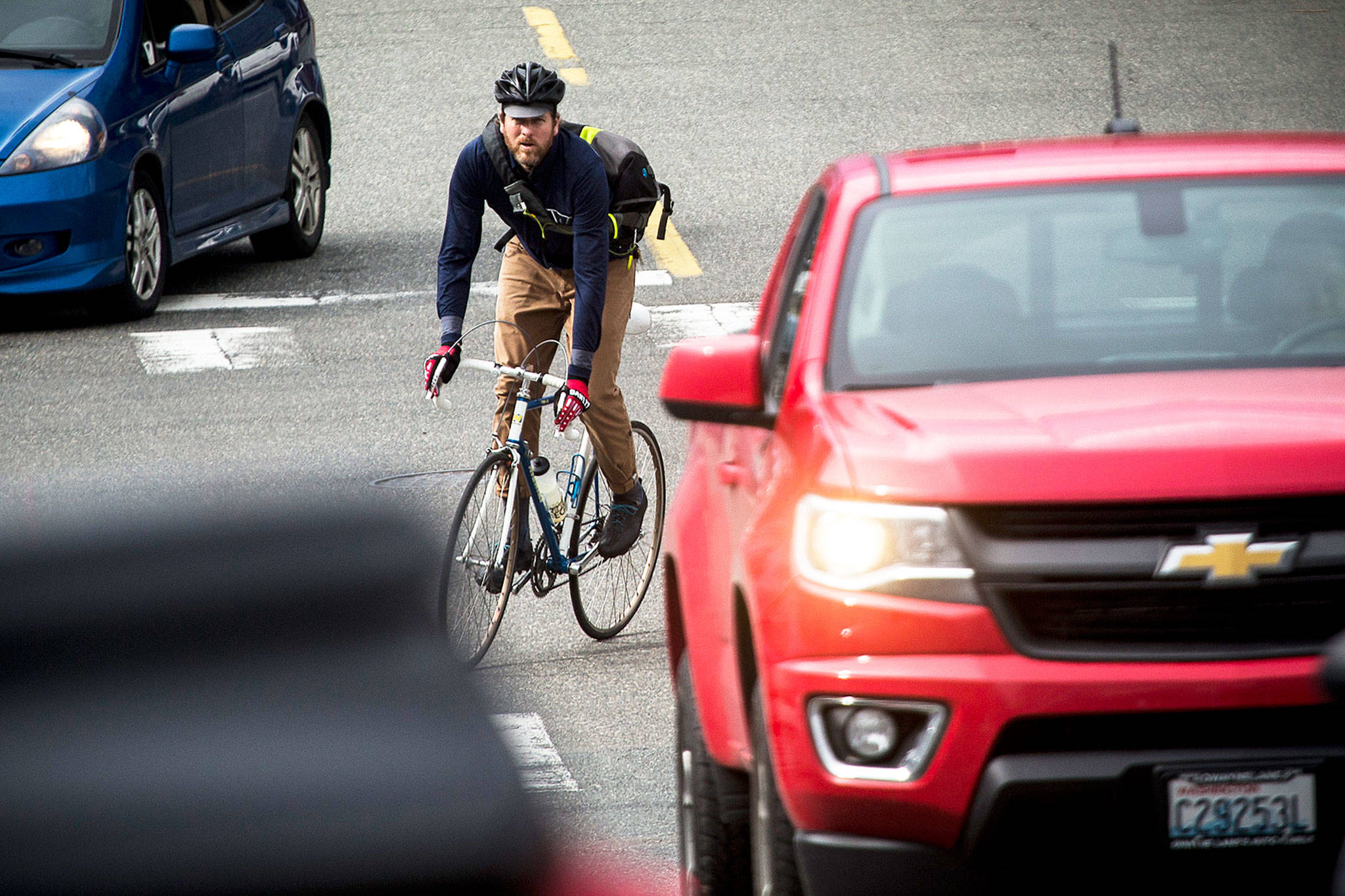I’ll never forget pedaling along Old Snohomish Monroe Road a few summers ago.
A friend and I were out for a long morning bike ride on a route he set. He didn’t tell me the distance or where we were headed, other than when to turn.
We went from Lowell in Everett, through Cathcart, Monroe, Snohomish and Tualco, and back. We passed campgrounds and golf courses, cows and horses, rivers and streams, and acres of farm land and forest. The near-dawn air was dewy and cool, but the sunshine warmed us as the day grew.
The ride, though arduous, was pastoral and pleasant.
Until it wasn’t.
On the back half of the 3-hour, 30-minute, 36-mile trek, I was leading on a slight incline on Old Snohomish Monroe Road. We were on a narrow shoulder lousy with debris ready to snag in our spokes or pop a tire. There was plenty of room for cars to pass us in their single lane, and almost all of them did without complaint.
But an SUV buzzed us with fewer than 6 inches to spare. It was close enough that if we’d turned our heads left to cough, we would’ve headbutt the side panels.
There was no need for it. Nothing they swerved to avoid, no oncoming vehicle that made it unsafe for them to crowd the median. (You notice the road differently when you top out at 20 mph and average 13 mph.)
As far as we could tell, they did it to fluster or scare us. It worked.
We were lucky. Others weren’t.
From 2005 to 2016, the number of fatal traffic crashes with bicyclists and pedestrians rose, according to Washington Traffic Safety Commission data. Globally, about 600,000 vulnerable road users (people not in enclosed vehicles) die each year, per a 2009 World Health Organization report.
For however safe we engineer vehicles with air bags, detection sensors, lights that angle for a turn, and seat belts, any person not in them remains as unprotected and disadvantaged against them as people did when the horse was the fastest way to travel.
That’s why the Washington State Legislature overwhelmingly (but not unanimously) approved last year a “move over” law that took effect in January. It specifies how someone on a road should use it, whether they drive a car or combine, ride a bike, Harley-Davidson or a mule, or use a tractor or wheelchair.
Drivers who want to pass someone not in a car on the shoulder must give at least 3 feet between them. Previously the law required motorists to pass at a safe distance, but didn’t specify that space. Enforcement is up to deputies, police and state troopers.
“Where we don’t or can’t have separated facilities, the driver moving over to leave more room as they pass provides that separation,” Washington State Department of Transportation director of active transportation Barb Chamberlain said in an email. “The faster the driver is moving at the point of impact, the greater the chances the person they’re hitting will die, so this is especially critical on highways and other higher-speed roads.”
That’s a good start, but the Everett Bike/Walk Committee would like even greater separation.
“In general, as far as the committee is concerned, the more space designated the better, and protective barriers are preferred on busy traffic corridors,” committee member and non-motorized advocate Ann Morgan said.
Snohomish County has 50.539 miles of bike lanes in unincorporated areas, Snohomish County Public Works spokesperson Matt Phelps said.
That’s helpful, but the rest of the thousands of miles of county roads are meant to be shared. They’re not solely the domain of engine-powered machines.
I understand the anxiety of driving a car and coming upon a cyclist in the road. They’re pinned between parked cars to their right and traffic their left. I want to pass, but maybe there isn’t room, and slowing down is sure to irritate the queue behind me.
Irritation is no excuse for clipping a fellow road user.
There’s no real harm to slowing down, waiting to pass, or taking a wider berth when it’s safe to do so.
Now there’s a law to curb drivers from pulling in closer to someone biking, riding, tractoring or wheeling along the road.
Ideally, driving should be forgettable for people. For everyone else, it ought to be memorable for the sights, not a fright.
Have a question? Email streetsmarts@heraldnet.com. Please include your first and last name and city of residence.
Talk to us
> Give us your news tips.
> Send us a letter to the editor.
> More Herald contact information.

























